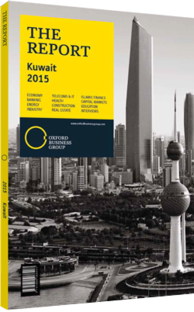Mohammad Y Al Hashel, Governor, Central Bank of Kuwait (CBK): Interview

Interview: Mohammad Y Al Hashel
To what extent is the growth of the corporate debt market contingent on greater sovereign issuance?
MOHAMMAD Y AL HASHEL: The development of a local corporate debt market is dependent on a number of factors, and is not solely reliant on greater sovereign issuance. In an open economy such as Kuwait, corporate borrowers are able to access a number of markets and instruments as a means of raising funds. It is envisaged that as Kuwait’s Development Plan has more and more effect upon the local economy – corporate issuers will themselves assess the relative advantages of tapping into the domestic capital market. The CBK has already laid the foundation for a benchmark Kuwaiti Dinar yield curve through the issuance of longer-dated Treasury bonds with maturities ranging from one to 10 years.
Are you satisfied with the progress to date in terms of finance companies meeting the governance rules put forward by the CBK in 2014?
AL HASHEL: We see corporate governance requirements for banks as being conceptually different from those applied to financial companies; however, we feel that both sets of corporate governance standards adequately safeguard stakeholders’ interests and ensure financial stability. The path has been one of progressive structuring and disclosure norms, as well as increasing convergence towards international standards. Still, we must continuously integrate emerging international standards into our governance rules.
How do you assess progress made thus far with regard to enhancing micro and macro measures in place to improve sector stability?
AL HASHEL: We believe that adequate tools are in place to support micro-prudential and macro-prudential policy measures. The micro-prudential policy tool kit is complimentary to the macro tool kit and measures were taken to minimise cross-sectional spillovers. As mentioned in a recent IMF report, Kuwait has been successfully using macro-prudential policy tools for quite some time now. The CBK’s macro-prudential framework covers banking sector risks and, although this is presently adequate, the framework is continually being improved to identify any systemic risks that may develop. The banking system is experiencing positive development in almost all fronts, ranging from strong growth in assets and deposits, as well as a decline in non-performing loans. Nonetheless, we are continuously evaluating our toolkits to include any new policy measures that enhance the stability and integrity of the sector as well as the overall economy.
What more needs to be done in regulatory terms to strike the balance between safeguarding the sector and encouraging prudent risk-taking?
AL HASHEL: The financial stability of the banking system and prudent risk-taking by the banks go hand-in-hand, and both have been important considerations for the CBK. Striking a balance between these two requires an ongoing introduction of new regulatory reforms, as well as the occasional upgrading of existing ones to keep pace with international developments. The regulations are supplemented through effective supervision.
In this respect, there are changes in banking regulations taking place around the world – primarily focusing on the quality and quantity of capital, but also addressing leverage and liquidity requirements – and these have gone a long way towards strengthening the banking sector. In line with ongoing international development, we anticipate numerous enhancements to Kuwaiti banking regulations.
Through the implementation of Basel III, the banks will ensure their risk profile is consistent with their risk appetite, and this will enhance the financial stability of the sector. We do believe that changing business models, the growing complexity of banks’ businesses, and cross-border investment and financing exposures by the banks will always require both the introduction of new regulations and the fine-tuning of existing regulations in line with international best practices.
You have reached the limit of premium articles you can view for free.
Choose from the options below to purchase print or digital editions of our Reports. You can also purchase a website subscription giving you unlimited access to all of our Reports online for 12 months.
If you have already purchased this Report or have a website subscription, please login to continue.

